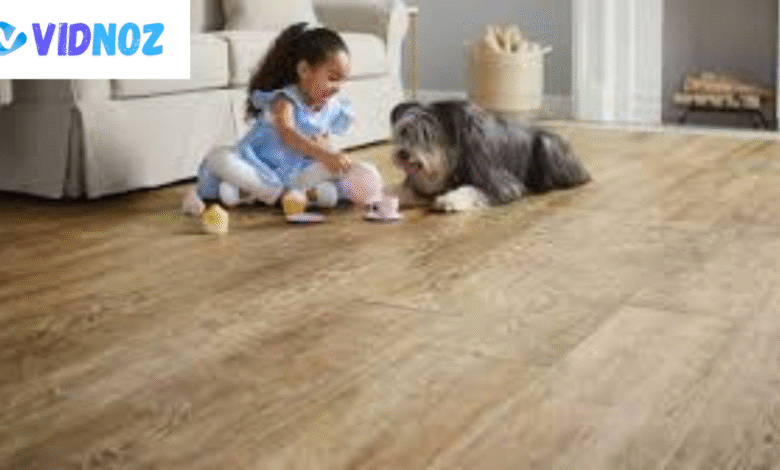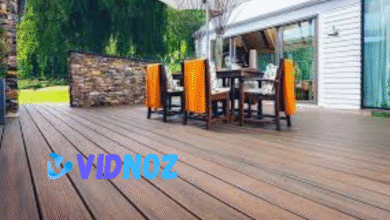Lifeproof Flooring: The Complete Guide to Durable, Waterproof, and Stylish Floors

Introduction to Lifeproof Flooring
Lifeproof flooring has become a popular choice for homeowners and builders looking for durable, waterproof, and stylish flooring solutions. This innovative product line, introduced by Home Depot, offers a blend of practicality and design that appeals to modern lifestyles. Lifeproof flooring is known for its ability to withstand the rigors of everyday use, making it ideal for areas prone to moisture, heavy foot traffic, and even pets. Whether you are remodeling your kitchen, bathroom, or basement, Lifeproof provides an option that is both functional and visually appealing.
What sets Lifeproof apart from traditional flooring options is its unique combination of materials and technology. It is typically made from luxury vinyl planks (LVP) or luxury vinyl tiles (LVT), designed with a waterproof core and a realistic wood or stone appearance. This means you get the look of natural hardwood or stone without the vulnerabilities like warping, staining, or cracking. Moreover, Lifeproof flooring caters to DIY enthusiasts with its straightforward click-lock installation system, which simplifies the renovation process.
Lifeproof flooring is widely recognized not only for residential use but also for light commercial applications. Its resilience against water damage, scratches, and dents make it a versatile choice across various settings. This article will explore the features, installation tips, comparisons with other flooring options, and customer feedback to provide a comprehensive understanding of why Lifeproof flooring might be the perfect solution for your flooring needs.
Key Features and Benefits of Lifeproof Flooring
One of the standout features of Lifeproof flooring is its waterproof technology. Unlike traditional hardwood or laminate floors that are susceptible to water damage, Lifeproof flooring has a waterproof core that prevents moisture from seeping in. This characteristic makes it an excellent choice for kitchens, bathrooms, laundry rooms, and basements—areas where spills and humidity are common. Homeowners appreciate the peace of mind knowing their floors won’t warp, swell, or grow mold, even if water accidentally pools on the surface.
Durability is another significant advantage. Lifeproof flooring is designed to resist scratches, dents, and stains, making it suitable for homes with pets and kids. The tough wear layer on top of the vinyl plank acts as a shield against daily wear and tear, ensuring the floor looks fresh for years. Its scratch-resistant nature means it can handle pet claws and heavy furniture without losing its charm. The product also boasts a dent-resistant core, which helps maintain the floor’s integrity even under heavy objects.
A major selling point is Lifeproof’s easy installation process. Thanks to the click-lock design, many homeowners can install the flooring themselves without professional help. This DIY-friendly approach can save on installation costs and allows for quicker project completion. Lifeproof flooring comes in a variety of styles, textures, and colors, from rustic wood grains to sleek modern stone looks, enabling customization to match any decor theme.
Maintenance of Lifeproof flooring is hassle-free. Unlike carpets or hardwood that require special cleaners or refinishing, Lifeproof floors can be cleaned with simple sweeping and mopping using mild cleaners. Their resistance to stains and spills further reduces maintenance efforts, making them ideal for busy households. Additionally, Lifeproof is conscious of environmental impact, offering products that contain recycled materials and are recyclable, aligning with the growing trend of eco-friendly building practices.
Lifeproof Flooring Installation Guide
Preparing for Lifeproof flooring installation begins with ensuring the subfloor is clean, dry, and level. Any debris or moisture can affect the performance of the floor over time. If you are installing over existing floors, verify compatibility and stability to avoid problems later. Basic tools like a tape measure, utility knife, spacers, and tapping block will be needed, but professional-grade tools are generally not required, which supports the product’s DIY appeal.
The installation itself follows a straightforward click-lock system. Planks are placed together edge-to-edge and snapped into place without glue or nails. Starting from one corner, installers should lay down the first row with spacers against the wall to maintain expansion gaps. Each subsequent plank clicks into the previous one, allowing the floor to “float” over the subfloor. This method accommodates slight movements due to temperature or humidity changes, preventing cracking or buckling.
For beginners, it is recommended to watch instructional videos or consult manufacturer guidelines to avoid common mistakes like uneven rows or gaps. Cutting the planks to fit corners and edges is simple with a sharp utility knife. In cases where repairs are necessary, individual planks can be replaced without disturbing the entire floor, offering convenience and cost savings. Overall, Lifeproof flooring installation combines simplicity with efficiency, making it a favored choice among both homeowners and contractors.
Comparing Lifeproof Flooring to Other Flooring Options
When considering Lifeproof flooring, it is useful to compare it with traditional hardwood flooring. While hardwood offers a timeless and natural aesthetic, it is prone to moisture damage, scratches, and requires periodic refinishing. Lifeproof, on the other hand, delivers a similar look with enhanced durability and waterproof qualities, often at a more affordable price point. It is ideal for those wanting the wood appearance without the maintenance headaches.
Compared to laminate flooring, Lifeproof offers superior waterproof performance. Laminate floors can suffer swelling or warping when exposed to water, whereas Lifeproof’s waterproof core remains unaffected. Additionally, Lifeproof’s vinyl composition provides better sound absorption and warmth underfoot. In terms of visual appeal, Lifeproof tends to offer more realistic textures and finishes, contributing to a more authentic look.
When stacked against other vinyl plank flooring brands, Lifeproof stands out due to its balance of quality, price, and warranty coverage. Some competitors may offer similar waterproof features but lack the same ease of installation or durability. Cost-wise, Lifeproof is competitive, often providing better long-term value given its lifespan and minimal upkeep.
The decision on flooring ultimately depends on room use, budget, and lifestyle needs. For high-moisture areas or homes with active families and pets, Lifeproof flooring is often the recommended choice due to its resilience and maintenance advantages.
Conclusion
Lifeproof flooring presents a compelling option for anyone seeking a blend of style, durability, and waterproof performance. Its innovative materials and thoughtful design make it suitable for a wide range of environments—from busy kitchens to cozy living rooms and even commercial spaces. Easy installation and low maintenance further boost its appeal, especially for DIYers and busy households.
By understanding Lifeproof flooring’s benefits, installation process, and how it compares to other flooring options, you can make an informed decision for your next renovation project. Whether you prioritize aesthetics, practicality, or longevity, Lifeproof flooring offers a versatile and reliable solution that doesn’t compromise on style.
Also Read: phillies uniforms 2024
